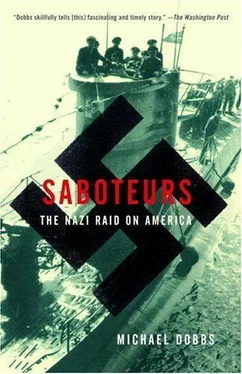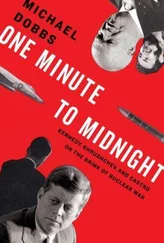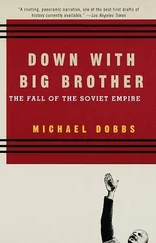Royall questioned Burger about a trail of evidence he had left on Amagansett Beach—a half-smoked pack of German cigarettes, a bottle of schnapps, a raincoat, a vest—that had helped lead the Coast Guard to the arms cache. This suggested a premeditated decision to sabotage the sabotage operation. The defense lawyer noted that his client’s version of events was “corroborated one hundred percent by the Coast Guard.” Burger had mentioned leaving the items on the beach in his original statement to the FBI, at a time when he had no way of knowing they had already been found by the Coast Guard.
As defense counsel for all the saboteurs with the exception of Dasch, Royall recognized that he was in a tricky position. By emphasizing Burger’s role in wrecking Operation Pastorius, he was drawing attention to the passivity of his other clients. It was a clear conflict of interest that violated a fundamental concept of American justice: the right of defendants to separate counsel. Reflecting on the case six decades later, as the sole surviving member of the prosecution team, Washington lawyer Lloyd Cutler would conclude that this alone would probably have been “sufficient cause for a mistrial” in any normal legal proceeding. 38
But a military commission was not a normal legal proceeding.
EVER SINCE the trial opened, tensions had been building within the government over who should take the credit for breaking the case. As the man who had announced the arrests of the saboteurs, J. Edgar Hoover was the public face of the investigation. On the third day of the trial, the FBI director went on the radio to denounce the saboteurs as “Nazi scoundrels,” boast that his G-men men had foiled “a diabolical scheme… to paralyze American industry,” and warn that Hitler would “try to send more destructionists to our shores.” 39
Hoover’s attempts to grab all the glory for the FBI were deeply resented by other government agencies, particularly the Coast Guard, which felt that its men deserved at least some recognition. But whenever the Coast Guard tried to draw attention to the role played by Cullen and others, it ran afoul of the Bureau’s efficient and aggressive public relations outfit. Hoover’s top publicist was the energetic Louis Nichols, who had come to the FBI from the advertising industry and liked to tell his boss about the strong-arm tactics he used to slap down his bureaucratic rivals.
When the Coast Guard public relations people complained that Hoover’s radio script made no mention of Cullen, Nichols knew exactly what to do. After clearing his approach with Hoover, he told his Coast Guard counterpart, “on a purely personal basis,” that it would be very unfortunate if the whole story came out. 40If the Coast Guard insisted on making Cullen a hero, it might have a difficult time explaining why so little was done to raise the alarm, why the saboteurs were able to board a train to New York from Amagansett, why the FBI was not informed until a long time afterward. The FBI had avoided mentioning Cullen only because it wanted to save the Coast Guard “any embarrassment.” How the Coast Guard handled the matter was its own business, of course, but the FBI believed that “we have enough to do to fight the enemy without having fights among ourselves.”
For a while, everything seemed to go Hoover’s way. Nichols had a tame senator, James M. Mead of New York, propose a congressional medal for the FBI director, an idea enthusiastically seconded by Hoover’s main ally in the media, Walter Winchell. But then the Coast Guard struck back, in classic Washington fashion, with a leaked newspaper story:
OLD VEST HELPED TO TRAP NAZIS ON TRIAL HERE
Coast Guard Officer
Cracked Case With
Aid of N.Y. Police 41
In the front-page Washington Post report, credit for breaking the case went to the Coast Guard, not the FBI. Cullen, “a department store delivery boy before he joined the Coast Guard,” had surprised the saboteurs on the beach. Cullen had then led Coast Guard intelligence officers to a buried arms cache, and a vest with a telltale laundry tag. The intelligence officers had tracked down the owner of the vest through “skillful detective work,” handing over a dossier on the case to the FBI, which proceeded to round up the saboteurs. The only thanks the Coast Guard had received from the FBI for its input was a demand from Hoover that the two intelligence officers be fired for “holding out the vest.”
Much of the account was fiction—the laundry tag on the vest had proved to be a false lead—but what most upset Hoover and Nichols about the story was the implication that the FBI’s role had been peripheral. While the presses were still running, Nichols demanded a correction, and the Post agreed to amend the headline to read: “Coast Guard Officer Cracked Case with Aid of N.Y. Police and FBI.” Unsatisfied with this minor victory, Nichols briefed the Bureau’s “established friends” in the media the following day. The beneficiaries of the counterleak included the New York Times, which ran a story headlined:
FEDERAL SERVICES CLASH IN SPY TRIAL
Hoover of FBI Declares That the Coast Guard Fails to Cooperate Properly
VEST OF NAZI AN ISSUE
Officer and Others Alleged to Have Retained the Garment for Several Days 42
By this time, Hoover was spitting mad. He rejected a truce proposal from the Office of War Information, which suggested a joint statement “approved by both the Coast Guard and the FBI setting forth the chronological developments of the case.” Such a statement, he told his aides, would only reward the Coast Guard, which “had nothing to do with this case other than to obstruct and interfere with it,” and was now putting out “false and erroneous stories.” 43
The way to end the sniping, Hoover snapped, was “for the Coast Guard to shut up.”
THE BUREAUCRATIC warfare was soon forgotten as Americans, young and old, were swept up in what the press described as “the greatest manhunt in American history.” 44On July 25, the FBI announced a nationwide search for Walter Kappe, Reinhold Barth, and Joseph Schmidt, who were reported to be planning fresh sabotage missions against America. Hundreds of thousands of wanted posters were printed, and nailed up in public places. Soon saboteur sightings were coming in from all over the country. 45
The Los Angeles office of the FBI received seventy-five tips the first day alone. A nine-state police alarm was ordered after the reported sighting of all three wanted men on Napeague Beach, Long Island, not far from Amagansett, but the suspects turned out to be street entertainers. The commanding officer of Fort Myer, Virginia, reported a rumor that Kappe had been inducted into the U.S. Army “under the name of Herbert Smith.” Foreign middle-aged men traveling in threesomes aroused particular suspicion. In Freeport, Long Island, three Norwegian seamen were detained after someone heard them talking animatedly “in German”; it turned out that their ship had been sunk by a German U-boat. In Boston, three Frenchmen were arrested, and only released after they proved that they worked for the French consul.
Suspects were hauled off trains, airline flights, and ships. Secretaries turned in their boyfriends, bus drivers reported on their passengers, elderly matrons scoured the public parks for anyone acting suspiciously. A Chicago woman wrote Hoover to complain about the “curious looking tramps” she had seen on a visit to Florida, “not the usual run of bums often seen during the past few years, but very distinctive looking ones” dressed in full “tramp paraphernalia.” One of these so-called “tramps,” she felt sure, was Joseph Schmidt.
Читать дальше












